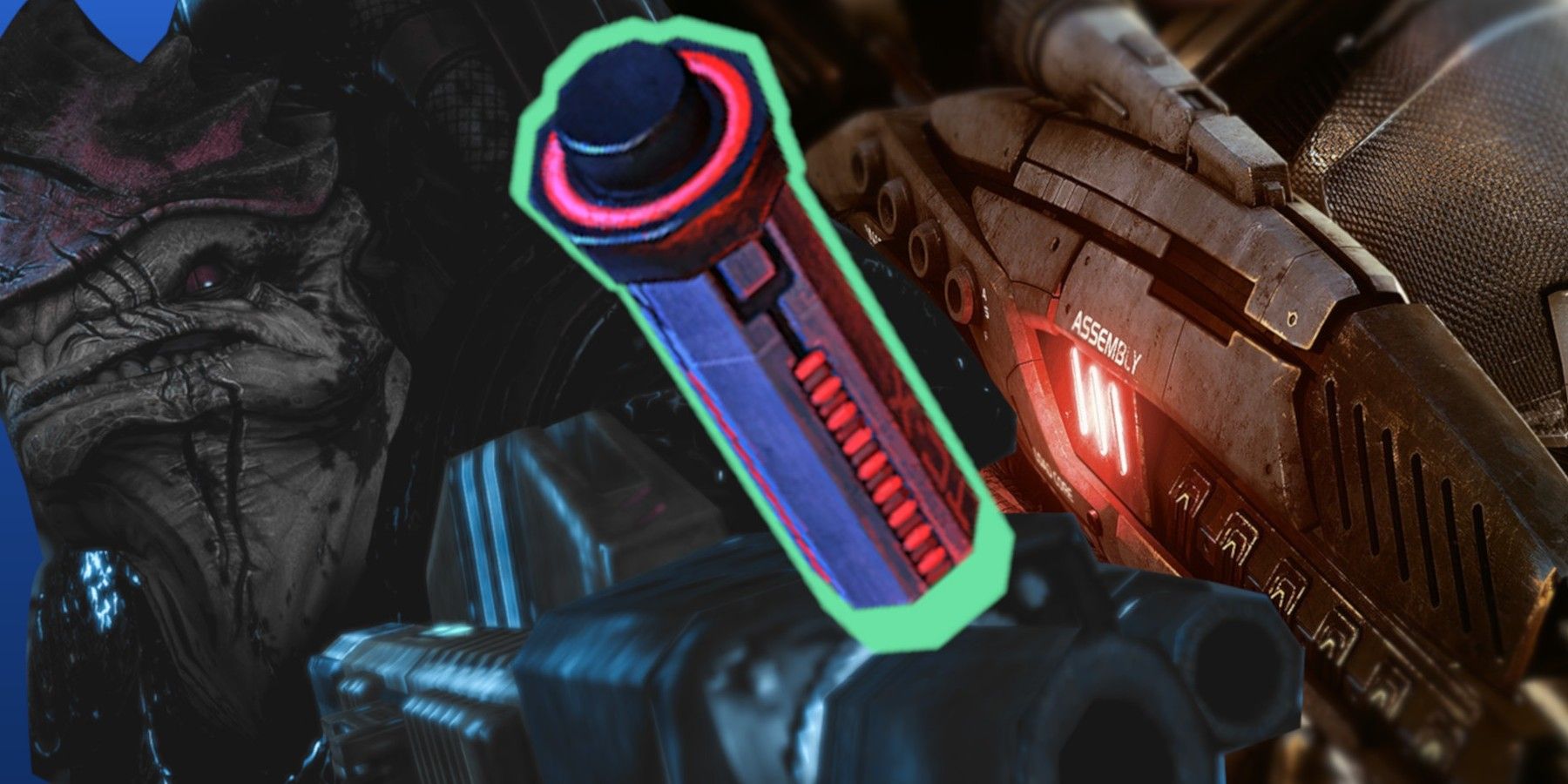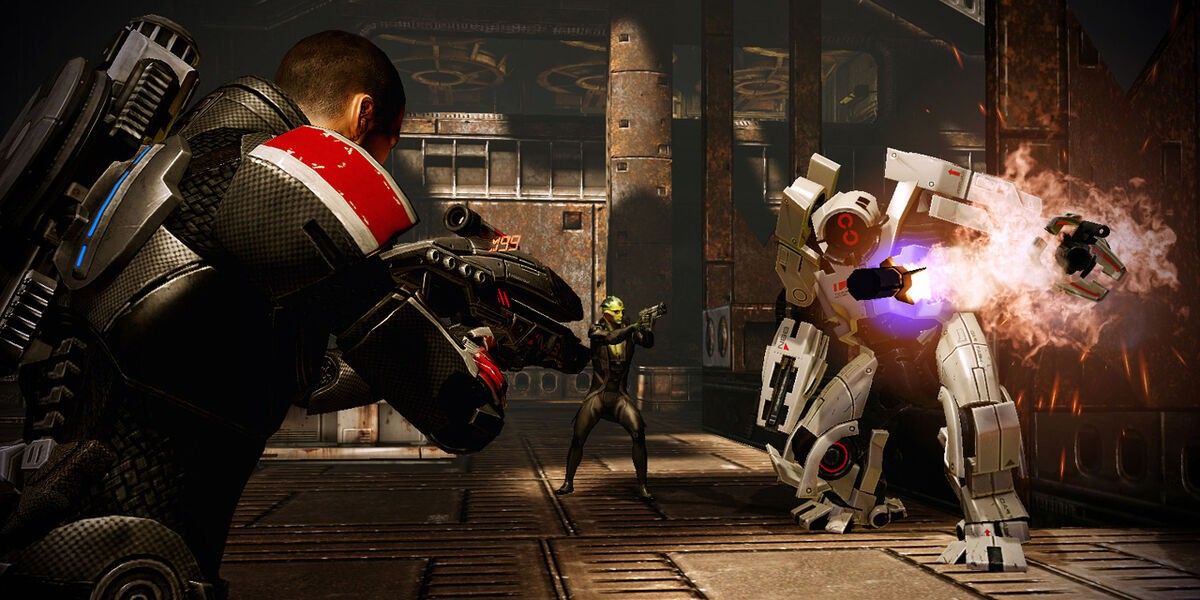
The upcoming release of Mass Effect's Legendary Edition will allow a new generation of gamers to experience not only one of gaming's finest role-playing games but one of the best science fiction epics ever made. The most marketed aspect of the trilogy's remaster is a complete enhancement of the first game, which features various graphical and gameplay improvements for modern audiences. But a notable aspect of the Mass Effect 1's gunplay has remained intact: unlimited ammunition for all guns, instead of using an overheating system varying from weapon to weapon.
Whenever Shepard fires their weapon, regardless of the type, the guns of Mass Effect 1 will heat up the more shots are taken; once a weapon overheats, players must allow the gun to briefly cool before shooting again. The sequels began to adopt more modern third-person shooter conventions with traditional ammo systems, leading to more fast-paced gunplay and ease-of-use for newer players. Players in Mass Effect 2 and 3 will eventually be unable to fire their weapon after a set amount of shots are fired. Shepard is then forced to pick up thermal clips from defeated enemies or across the map.

While this was a well-liked change among most fans of the series, the series also has an in-universe explanation for almost every major gameplay feature throughout all three games. Implementing a traditional ammo system would naturally contradict the first game's explanation that all standard firearms use mass effect fields to launch thousands of rounds of metal shaved from the gun's magazine. Not to mention the daunting task of explaining how armed forces throughout the entire galaxy were supplied with a brand new standard of ammunition in a very short amount of time.
Thankfully, Bioware thought ahead when it came to implementing lore on the game's ammo system and thus came up with the concept of the "thermal clips." Technically speaking, all firearms still retain their metal rod ammunition, where the internal mechanisms of the gun shave off tiny projectiles at the cost of overheating when firing too many shots too quickly. After the geth invasion of the Citadel, galactic militaries everywhere realized the tactical advantage of shooting more rounds downrange than the enemy.
With this newfound combat wisdom, galactic societies everywhere from Citadel space to the uncharted Terminus Systems adopted thermal clips as their primary method of ammunition in order to better fight against the geth, whose own guns shot very, very quickly. The thermal clip system allows a typical mass effect firearm to shoot many more rounds in a much shorter amount of time at the cost of reaching the weapon's maximum heat tolerance much more quickly and being unable to fire.

The massive shift in the use of thermal clips must have occurred very shortly after the events of Mass Effect 1, not even a full year after the geth invasion and Sovereign's defeat. The beginning of Mass Effect 2 had Shepard nearly perish during the Collectors' destruction of the first Normandy, with Shepard waking in a Cerberus base after a two-year period of resuscitation. When the base is under siege and Miranda Lawson directs Shepard to a weapon, the Commander remarks that there is no thermal clip in the gun, indicating that he knows what thermal clips are and how they work despite being out-of-the-loop for two whole years.
This may seem like a massive drawback that negates the entire point of having mass effect fields for near-limitless ammunition. However, the standardization of thermal clips means that ammunition can be found practically anywhere there is civilization, with the player very rarely ever finding themselves completely deprived of ammunition. There is also the added advantage of all weapons (sans heavy weaponry) having universal ammunition types -- picking up a thermal clip will "reload" either a pistol or shotgun without issue.
Ultimately, while many fans prefer the overheat system, thermal clips also lead to a much more cautious gameplay loop in Mass Effect's sequels. Without the ability to fire a nearly infinite array of bullets, players had to plan and think their way through encounters. The addition of a narrative explanation just makes this one more way Mass Effect has built its incredible world for players.
0 Comments